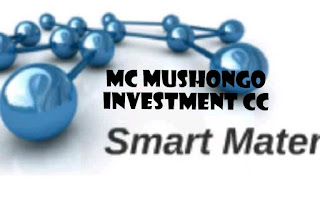Smart construction
Smart Construction Materials which also known as intelligent materials, active materials and, adoptive materials, are those that have the capability to respond to changes in their condition or the environment to which they are exposed, in a useful and controlled manner.
The input that cause the change in smart material properties may be in the form of mechanical stress / strain, electrical / magnetic field or changes in temperature, moisture, pH, and light.
Their unique properties make them a crucial material in many fields of engineering and science. They are used in civil engineering projects and contribute in increasing performance, comfortability, and energy efficiency of structure.
the smart materials are categorized as follows.
1. Shape Memory Alloys (SMAs)
Such materials possess the ability to regain to some previously defined shape or size when subjected to appropriate thermal changes. Shape memory alloys find their applications in new applications in civil engineering specifically in seismic protection of buildings.
The application of shape memory alloy in civil engineering application, are- repeated absorption of strain energy without permanent deformation, for obtaining wide range of cyclic behavior, to resist fatigue resistance under large strain cycles, and due to their great durability and reliability in the long run.
2. Magnetostrictive Materials
These materials undergo mechanical deformation in proportional to the square of the electric field, which refers to the material quality of changing size in response to either an electric or magnetic field, and conversely, producing a voltage when stretched.
3. Piezoelectric Materials
These are the materials possess capability to produce voltage when surface strain is introduced. Conversely, the materials undergo deformation (stress) when an electric field is applied across it. When integrated into a structural member, a piezoelectric material generates an electric field in response to mechanical forces.
4. Electrorheological Fluids
They are the colloidal suspensions that undergo changes in viscosity when subjected to an electric field. Such fluids are highly sensitive and respond instantaneously to any change in the applied electric field. find their application in shock absorbers.
5. Electrochromic materials
These materials alter their light transmission properties when voltage is applied.
Applications of Smart Materials in Construction
1. Smart concrete (a composite of carbon fibres and concrete) used in smart structures is capable of sensing minute structural cracks / flaws. Unlike conventional concrete, the smart concrete has higher potential and enhanced strength.
It can be used in electromagnetic shielding and for enhanced electrical conductivity of concrete. Smart concrete under loading and unloading process will loose and regain its conductivity, thus serving as a structural material as well as a sensor.
Smart concrete plays a vital role in the construction of road pavements as a traffic-sensing recorder, and also melts ice on highways and airfields during snowfall in winter season by passing low voltage current through it.
2. Smart materials have applications in the design of smart buildings. Smart materials are used for vibration control, noise mitigation, safety and performance.
3. In construction of smart buildings, for environmental control, structural health monitoring.
4. In smart building, it used to transform efficiency, comfort, and safety for people and assets.
5. Smart materials reduce the effects of earthquakes.
6. In marine and rail transport applications for strain monitoring using embedded fibre optic sensors.
7. The use of smart materials permits the construction of smart bridges especially cable stayed bridge with a wider span to avoid the increased susceptibility to vibrations caused by ambient factors such as wind, rain or traffic. Hence, the structure required less maintenance and the response of the structure can be monitored.
8. They are used to monitor the civil engineering structures to evaluate their durability.
9. Smart materials in structures used to monitor the integrity of bridges, dams, offshore oil-drilling towers where fiber-optic sensors embedded in the structures are utilized to identify the trouble areas.
10. They can be used to rehabilitate the cracking of concrete when super elasticity smart material is used as the reinforcement bar.
Construction is all about knowledge and understanding- Mc Mushongo investment cc people is about our business.




Comments